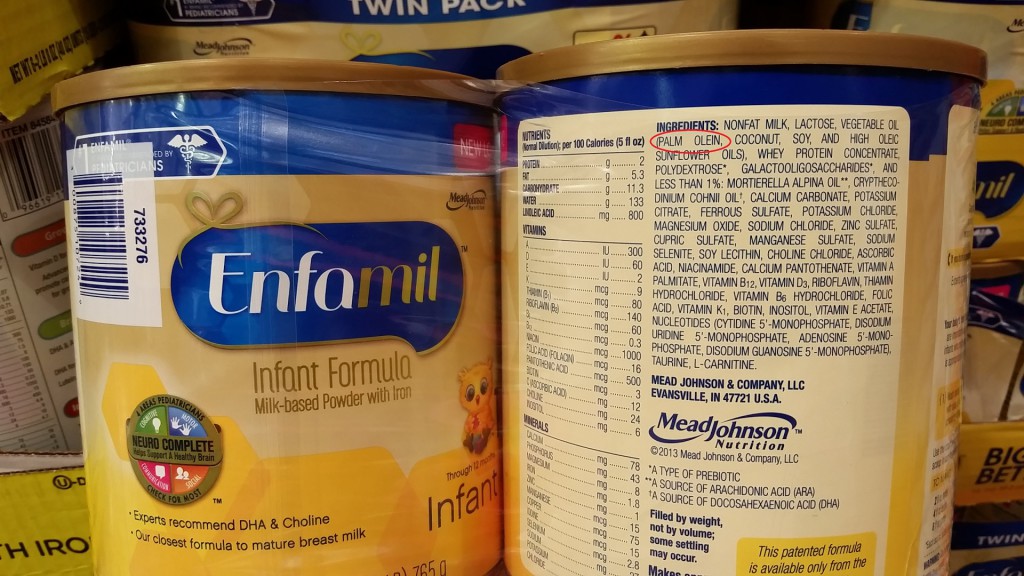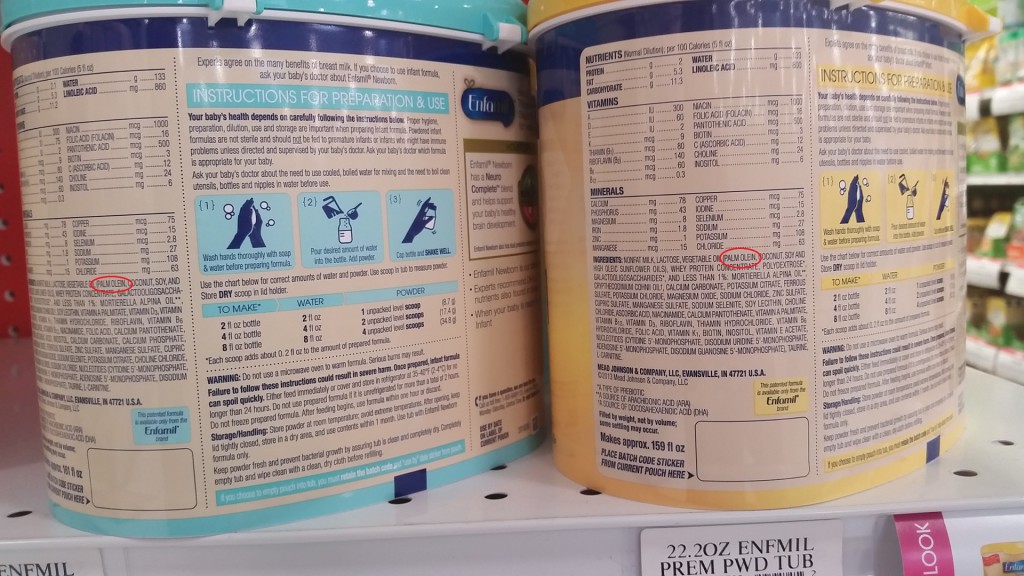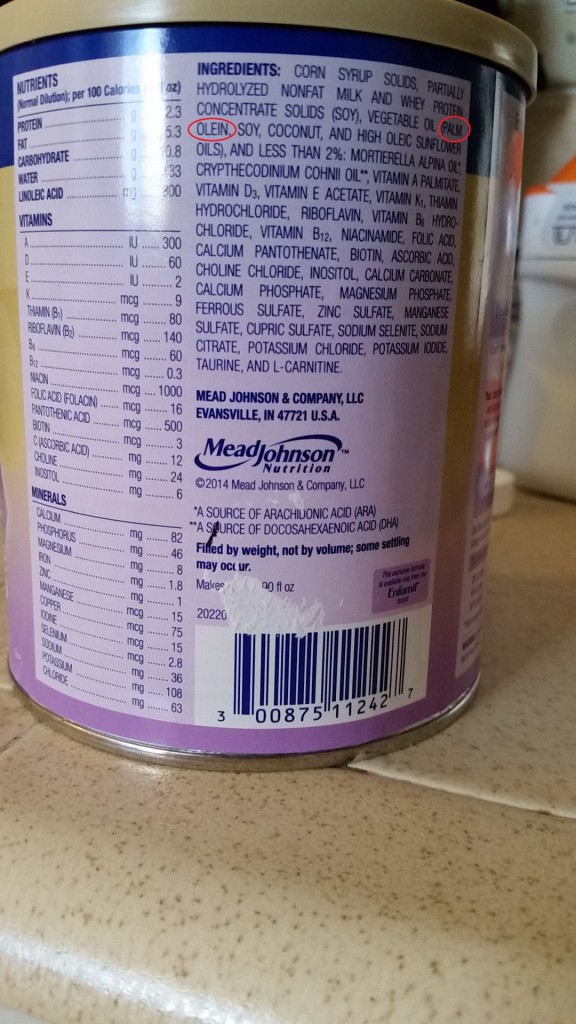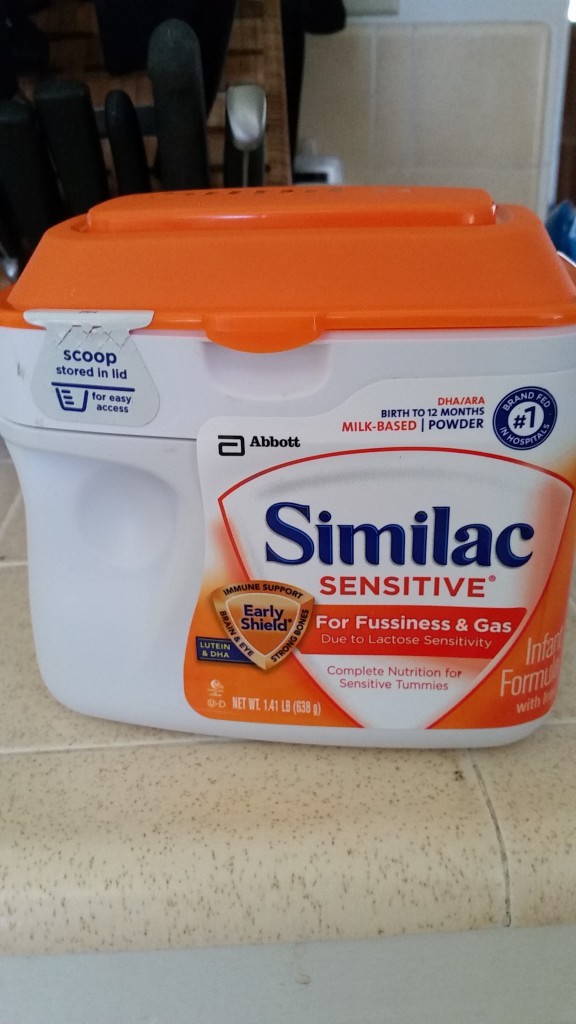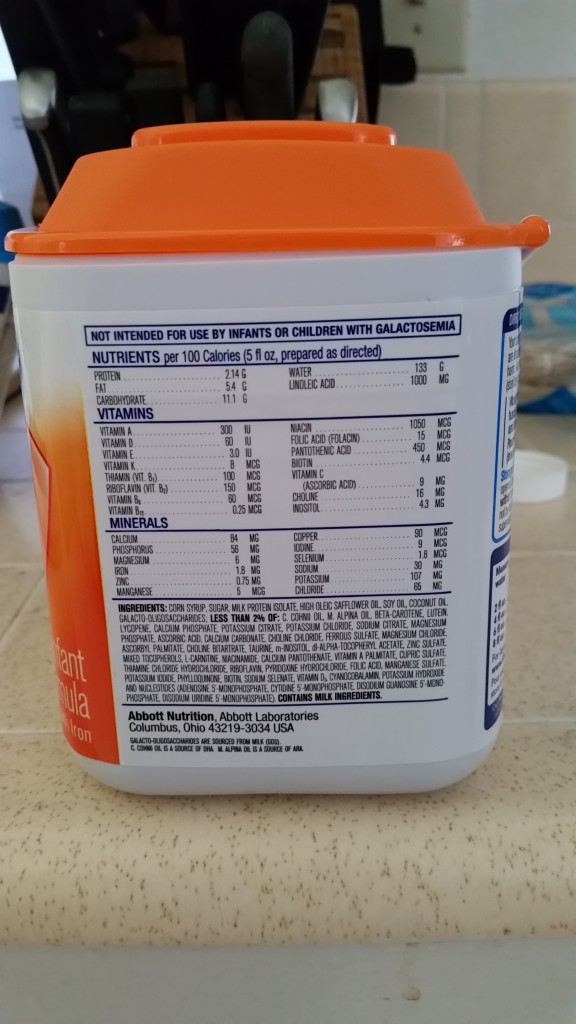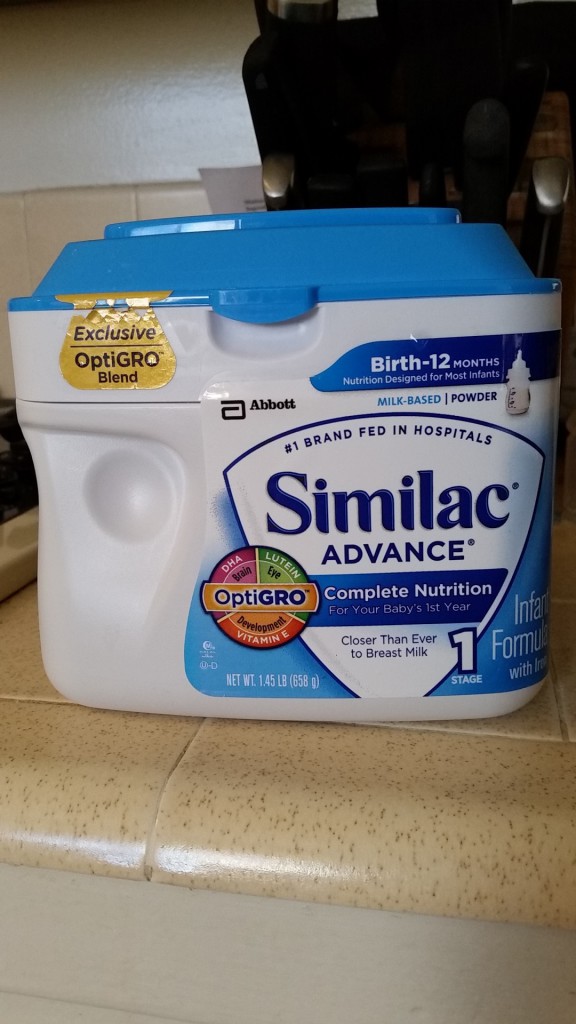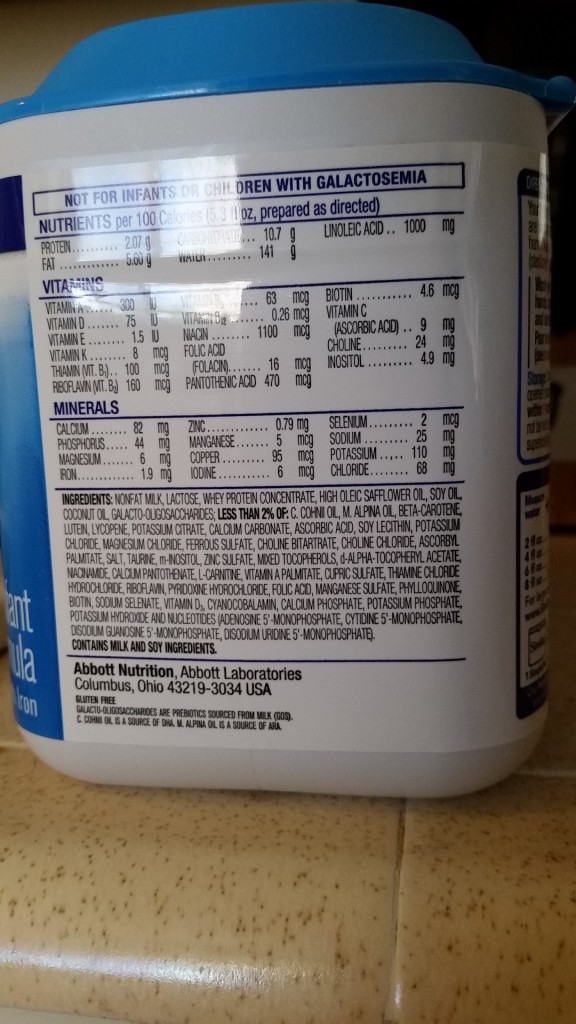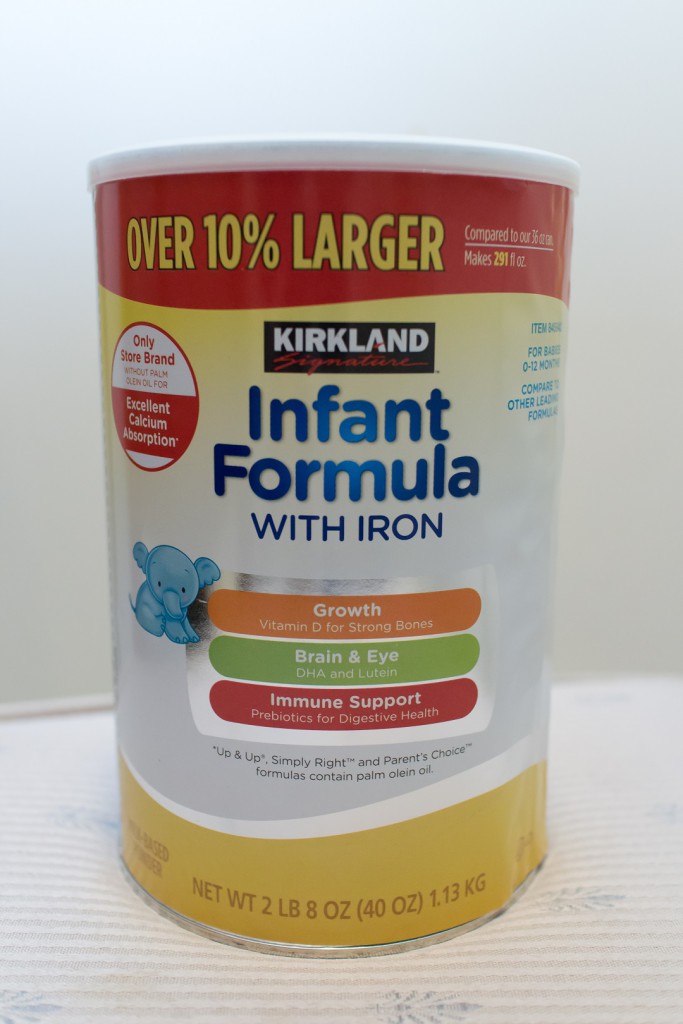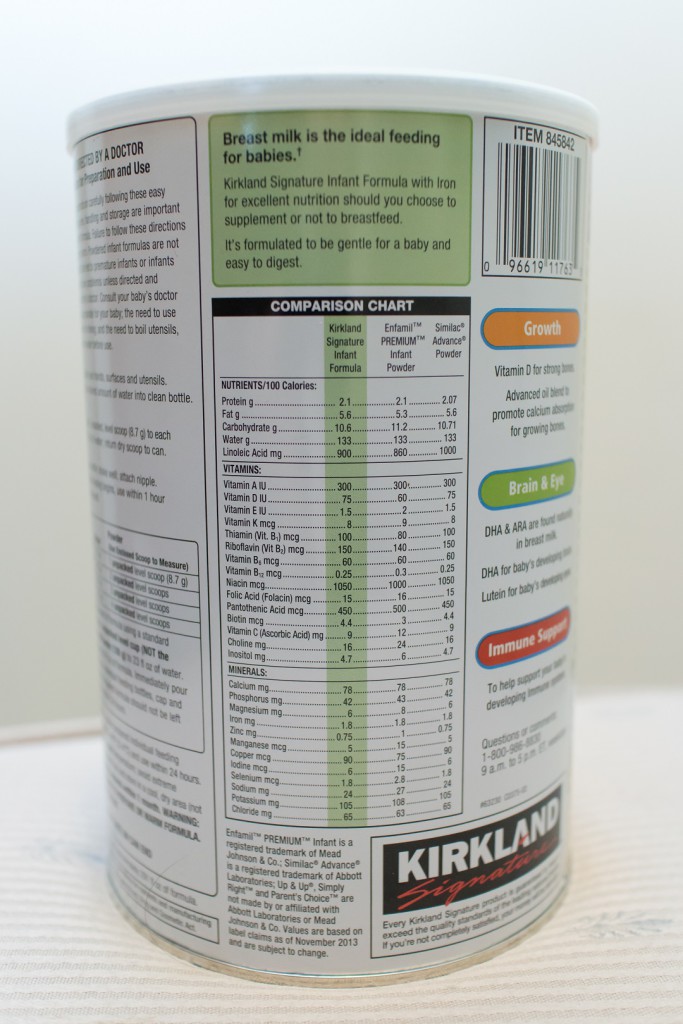As baby formula labels continually admonish mothers, breastfeeding is better than formula. But if you can’t breastfeed or don’t produce enough milk–as in our case–formula can be a lifesaver.
Infant formula is a highly regulated food and contains the same minimum nutritional content.12 However, be aware that formulas differ in quality.
You may have seen Costco Kirkland Signature formula claim that it’s the “[o]nly Store Brand Without Palm Olein Oil For Excellent Calcium Absorption.” Why do they make that claim? Because feeding your infant formula with palm olein leads to higher amounts of fat and calcium excreted in their poop.3 In other words, their bodies absorb less calcium.4
Why this matters: poor calcium absorption can lead to lower bone mass or bone density in infants.5678 Palm olein is added to the formula to provide palmitic acid, but it isn’t absorbed as well as in breast milk due to its different structure (esterification at the end of the molecule, instead of in the middle).910 The unabsorbed palmitic acid and calcium react, making the calcium insoluble, which leads to reduced calcium absorption.1112
Another effect of using formula with palm olein is that babies had firmer poop due to the unabsorbed palmitic acid and calcium.13
Why do companies use palm olein in baby formula? Palm olein is used to mimic the fatty acid composition of breast milk by providing palmitic acid, a major fat in breastmilk, but there are a few alternatives. First, the companies could use a synthetic version of palmitic acid that is esterified in the middle like in breast milk. Second, they could use high oleic sunflower/safflower oil (this is used to provide oleic acid, another fat in breastmilk) or other fats like we see in some of the formulas below. There may be cost savings from using palm olein, but I can’t confirm pricing.
What bothers me is that we’ve known about this problem since 1996 (see footnote 10). Despite numerous studies since then, and despite alternative ingredients, you still find palm olein oil in baby formula today. To be fair, additional research says bone mineral density differences seem to disappear by two to four years of age. Also, these same studies don’t show any difference between using formula with palm olein versus formulas using alternatives, regarding weight gain, fussiness, or spitting up.1415
After reading that formula with palm olein leads to reduced bone mineral density compared to formulas with alternative fats, it was time to do some formula shopping.
Three different Enfamil formulas we checked have palm olein: Enfamil Infant Formula Milk-Based with Iron, Combo Pack, 121.8 Ounce (Packaging May Vary)
, Enfamil Newborn Infant Formula, Refill Pack, 16.6 Ounce 2 Count (Packaging May Vary)
, and Enfamil Gentlease Infant Formula Milk-Based Powder with Iron, Combo Pack, 118.1 Ounce (Packaging May Vary)
:
Even this organic brand (Vermont Organics Milk-Based Organic Infant Formula with Iron, 23.2 oz. (pack of 4)) has palm olein.
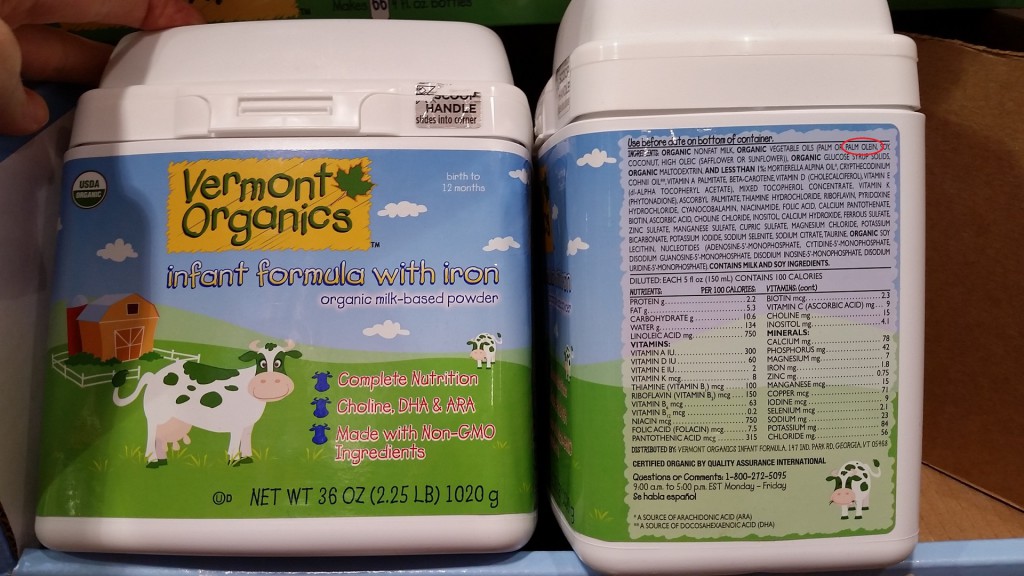
The two Similac formulas we checked, Similac Sensitive Infant Formula with Iron, Powder, 23.3 Ounces (Pack of 6) (Packaging May Vary)
and Similac Advance Infant Formula with Iron, Stage 1 Powder, 23.2 Ounces (Pack of 6) (Packaging May Vary)
, do not have palm olein:
Kirkland Signature does not have palm olein:
Conclusion:
Because babies grow so fast and so much, it is important to have proper bone mineralization. Using formula with palm olein leads to reduced bone mineralization. Some research says that babies fed palm-olein-based formula catch up in term of bone mineralization after a few years, but I’d rather feed my child formula that he or she can fully digest, right from the start.
REFERENCES
